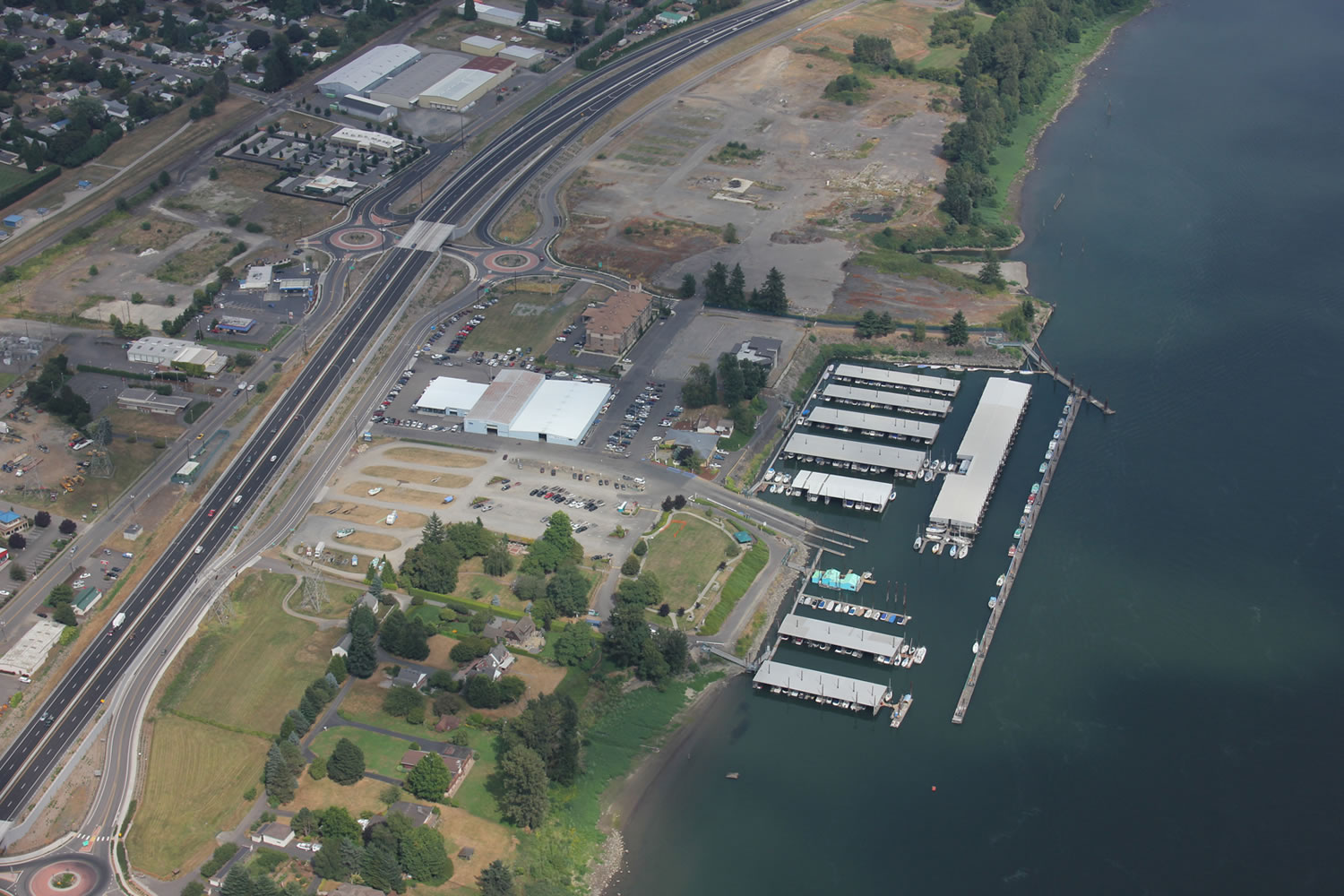If they wait a while, carefully pick the right strategy and if they hit the right market conditions, the Port of Camas-Washougal and a private developer may be able to transform 40 acres of waterfront property into a profitable destination point that draws visitors from the Portland-Vancouver region.
But that option carries problems of timing and risk. There are other, safer alternatives that could lead to the parcel’s redevelopment sooner, spurring new jobs and tax revenues.
Those assessments are just some of the major takeaways from a 63-page market analysis that was delivered to port commissioners Tuesday evening by Eric Hovee, principal of E.D. Hovee & Company LLC, based in Vancouver.
A decision on what direction the port should take with the property isn’t expected anytime soon.
“There’s no rush to judgment here,” port Commissioner Mark Lampton said as officials discussed the market feasibility study during Tuesday’s public hearing.
Hovee’s analysis focuses on the redevelopment potential of a 40-acre waterfront site that’s 1.5 miles west of Washougal’s downtown and bounded by Highway 14 and the Columbia River. The analysis, which spells out the advantages and disadvantages of various building scenarios, is intended to help the port and its partner — Killian Pacific, the Vancouver commercial real estate developer — achieve both public and private development goals for the site.
The port owns about 67 percent of the waterfront parcel while Killian Pacific owns 33 percent of the site through its affiliate, Parkers Landing LLC. As port officials discuss the site’s long-term development potential, they’re moving to accomplish other related tasks.
This week, for example, the port plans to formally request bids from companies on conducting environmental cleanup work at the site, a portion of which once housed a lumber mill.
The state Department of Ecology is picking up 90 percent of the $860,000 cost of cleaning up the site, said David Ripp, the port’s executive director. The port will use liability insurance funds it recovered to pay for the rest of the tab. The cleanup work is expected to be finished by mid-October.
The port also is seeking state grant funding to help pay for a new park and trail as part of the larger waterfront project.
‘A tough one’
One redevelopment idea is to sculpt the waterfront site into a “multi-use destination development,” a regional attraction featuring such uses as a resort or recreational water park or specialty retail outlet mall. If successful, such a project could create a visitor “gateway to (the Columbia River) Gorge scenic area,” according to Hovee’s analysis, with potential high spending and tax benefits. However, such a scenario requires an “experienced private operator or public financial support” and “may wait years for (a) qualified project to materialize.”
Another option would involve co-mingling a destination project with a lower-risk mixed-use development, which would allow building on half the site to proceed more quickly. However, Hovee’s report recommends no further consideration of either of those destination-oriented options, in part because “without an existing private commitment, land can be more productively used for community retail or mixed use.”
During Tuesday’s hearing, Hovee said it was possible to transform the site into a destination point but they’d have to define a vision, and find a company that not only agrees with that vision but can make a profit building it out.
Commissioners grappled with the destination scenarios.
Lampton said the waterfront site is a “jewel,” but that the question of how you make it into an attraction is “a tough one.” Most people in the area travel west, not east, to shop or to reach places, he said.
Commissioner Bill Ward said he doesn’t necessarily agree with that view. The waterfront site is unique, Ward said, as opposed to the standard commercial development you find along such corridors as 192nd Avenue in Camas and east Vancouver.
‘High amenity’
According to Hovee’s analysis, two other options — “community commercial center” and “commercial retail/office and residential mixed-use” — are feasible and merit more detailed evaluations.
The “community commercial center” scenario would include up to 350,000 square feet of commercial space, mostly for retail/service uses but with room for build-to-suit office space. It would create 720 jobs at full build-out, and generate $4.6 million in one-time state and local sales taxes, as well as $6.6 million in annual sales and property taxes.
That option “misses (a) major opportunity for waterfront living but avoids (the) risk of overshooting a not yet tested market,” according to Hovee’s analysis.
Under the “commercial retail/office and residential mixed-use” option, the site would become an urban village, with about half of the property developed for retail and office purposes and the other half for apartments and townhomes. It would feature about 175,000 square feet of commercial development, 370 “high amenity” condos/apartments and 115 townhomes.
That option “diversifies (the) housing mix,” the analysis says, “with new multifamily plus townhome options (and) multi-year project build-out.”




